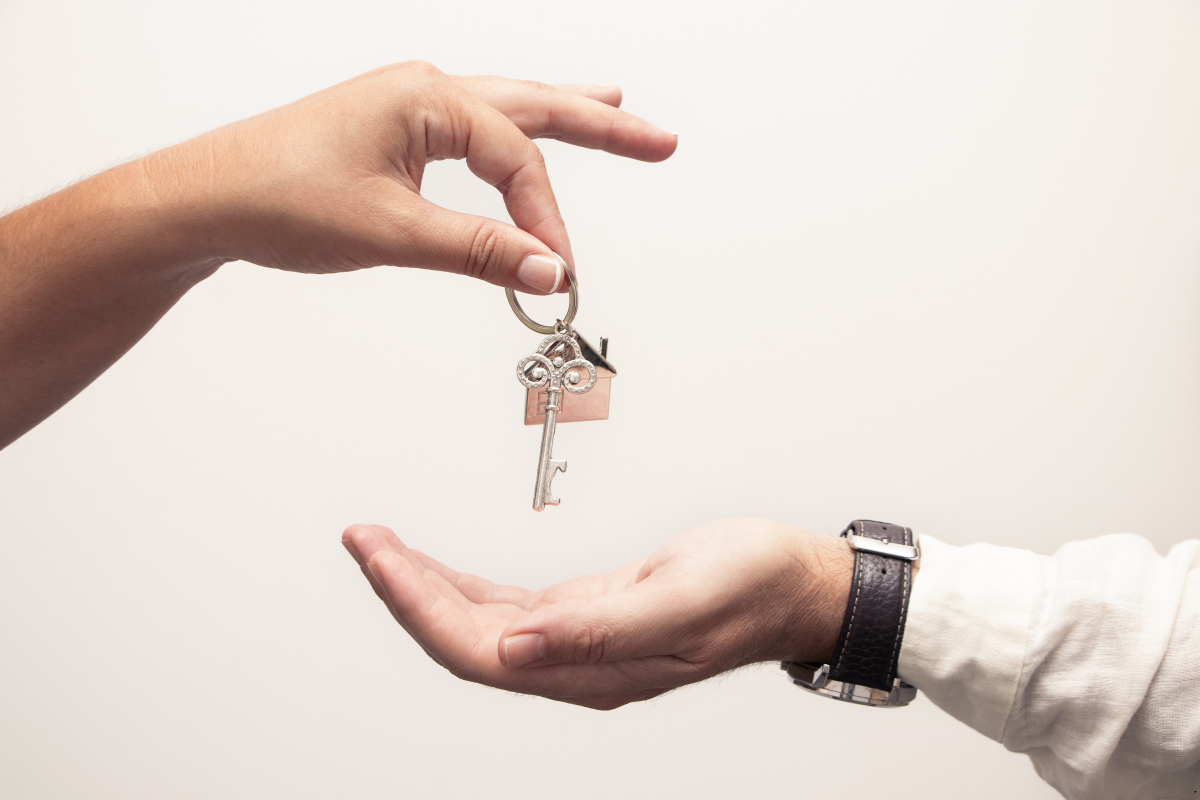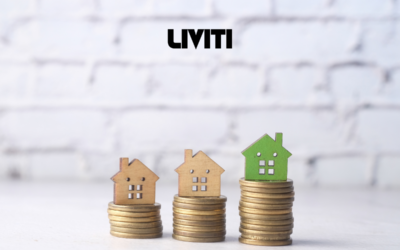Property investment has played a key role in women’s financial independence, which has changed dramatically in recent years with remarkable advancements in several nations. Likewise any other major industries in Australia, Aussie women are rapidly moving forward considering property investment as their key source to build wealth.
Compared to males, women face several financial obstacles, especially when it comes to investing and property. Women’s financial stability and homeownership aspirations are nevertheless hampered by systemic problems like income inequality, investment inequalities, and affordability constraints.
Many women, even those with high incomes, are less confident about investing and tend to avoid financial risks. To help them build long-term financial security, it’s important to provide clear financial education, supportive policies, and diverse investment options.

So why does it matter?
Property ownership isn’t just about having a place to live, it’s a critical tool for financial security, wealth accumulation, and retirement planning.
1. Property Ownership as a Key to Financial Security
- 56% of Australia’s total wealth is held in residential property, making it the largest source of wealth for individuals.
- Over the past two decades, property values have grown by 193.1%, far outpacing wage growth (81.7%).
- This means homeowners have been able to build wealth significantly faster than those relying on income and savings alone.
2. Protection Against Housing Costs in Retirement
- Homeownership plays a critical role in financial stability during retirement.
- Two-thirds of renting retirees live in poverty, with three in four single female retirees facing financial hardship.
- Owning a home eliminates rent-related financial stress, making retirement more secure.
3. Higher Wellbeing and Stability for Homeowners
- The NAB Australian Wellbeing Survey found a strong correlation between homeownership and overall wellbeing.
- Homeowners reported a higher standard of living and mental wellbeing compared to renters.
- Even financially stressed homeowners reported better security than renters, highlighting the emotional and psychological benefits of owning property.
4. Rising Housing Costs Make Ownership More Crucial Than Ever
- Housing affordability is at its worst levels on record, with rising deposits and interest rates limiting access to homeownership.
- The ‘Bank of Mum and Dad’ is playing an increasing role in helping first-time buyers enter the market, highlighting the growing difficulty of purchasing property independently.
- Though this is shifting toward ‘The Home of Mum and Dad’, where children are moving home to their parents in order to save money for a deposit.
- As property prices continue to rise, delayed homeownership can lead to long-term financial setbacks.
Property ownership in Australia is more than just a financial investment, it is a foundation for wealth-building, financial security, and wellbeing. Given the rising cost of housing, securing property early is essential for future stability, especially for women who face greater financial hurdles in homeownership.
Addressing affordability and financial literacy gaps can help create a more equitable property market.

Why Property Ownership is Key to Long-Term Financial Well-Being
Let us understand the relationship between property and wealth. Owning a home is a powerful driver of wealth accumulation, creating a significant financial advantage over renting. According to data from the Australian Bureau of Statistics (ABS), property is the largest asset class for middle- and high-income households, with homeownership rates exceeding 92% in these groups.
This disparity stems from the fundamental difference between building equity through mortgage payments and simply covering housing costs with rent. When homeowners make mortgage payments, they gradually increase their ownership stake in the property, creating a tangible asset that appreciates in value over time.

This equity serves as a cornerstone of financial security, contributing significantly to overall net worth. A PropTrack report found that buying remains cheaper than renting for approximately one-third of homes in Australia, particularly when considering long-term investment potential.
Conversely, renters’ payments provide shelter but do not translate into long-term asset ownership, leaving them with limited potential for wealth growth through housing. Consequently, homeownership emerges as a crucial pathway to financial stability and prosperity, offering individuals the opportunity to build a secure financial future.
Moreover, property investment plays a key role in generational wealth-building. However, ABS data also highlights that women are underrepresented in property ownership, underscoring the need for greater financial literacy and investment opportunities to bridge this gap.

The Barriers Holding Women Back from Property Investment
There are many indicators that suggest the pay gap between males and females. Based on the employment to population ratio, 68.5% of males had jobs as compared to 60.5% of females. Females worked on an average only 31.9 hours as compared to 38.4 hours for males.
Source: Australian Bureau of Statistics
Over the years, the gap between males and females with respect to average weekly earnings has widened. Females earn approximately $500 per week less than males which means $2000 per month and $24000 per year less than males.
The report by ANZ reveals a persistent gap in financial wellbeing between women and men, with women generally experiencing lower scores due to various socio-economic factors.
These factors include employment status, household living arrangements, caring for dependents, and mental health, all of which can significantly impact a woman’s ability to earn, save, and build financial resilience.
Women often feel less confident about their finances, particularly in planning for the future and understanding the risks associated with long-term investments.
This lack of confidence and knowledge contributes to women making fewer long-term investments, hindering their financial security. On top of that, Lenders often assess borrowing capacity based on income and savings history which can disadvantage women, particularly those with career breaks.
The Gender Investment Gap: A Missed Opportunity
The 2025 CoreLogic Women and Property report reveals both parity and disparity in property ownership and investments between men and women in Australia. While overall dwelling ownership is similar between genders (64.4% of men and 62.7% of women), a smaller percentage of women (11.4%) own residential investment properties compared to men (14.2%).
This gap is particularly evident among Gen Z, with significantly more young men owning investment properties. Furthermore, 40% of women reported having no investments at all, including property, compared to only 27.8% of men, highlighting a significant “gender investment gap.”
Beyond property, substantial differences exist in other asset classes. Men lead in superannuation and boast considerably higher average balances. The survey also uncovered a notable divide in share ownership and cryptocurrency investment, with men participating at much higher rates.
Even in co-ownership of investment properties, men tend to co-own more frequently than women. These findings emphasize the need for greater financial literacy and targeted initiatives to encourage women’s participation and success in diverse investment avenues.
Despite these gaps, the report also found that more women rate home ownership as extremely important compared to men. However, a larger proportion of women also cite affordability as a significant barrier to entry.

Turning Barriers into Opportunities: How Women Can Secure Their Financial Future
Are you aware there are plenty of ways you can take advantage of the government and begin your investment journey? Let’s take a look:
- Housing Australia Future Fund
The Australian government established the $10 billion Housing Australia Future Fund with the goal of promoting affordable and social housing. Providing 4,000 homes for elderly women at risk of homelessness as well as women and children affected by domestic and family violence is a major goal. This program supports the financial stability of vulnerable women by addressing housing security, which may open up future real estate investment opportunities.
- Working for Women Program Grants and Funding
The Working for Women Program of the Australian Government provides funding for initiatives that encourage women’s economic engagement. The “Back Her Brilliance” project, for instance, aids women in becoming self-employed and offers company development assistance that may result in their financial independence and ability to invest in real estate.
- Build-to-Rent-to-Buy Housing Pilot Program
For single women with stable lower-paying jobs, a trial program in the Australian Capital Territory seeks to provide long-term, inexpensive, and stable housing. By giving participants the opportunity to rent with the option to purchase the home at the end of a 10-year lease, this program provides a pathway to homeownership and makes real estate investing easier for women who might otherwise encounter financial obstacles.
Additionally, if you are a first time home buyer there are several more advantages you can avail. These initiatives offer a range of financial support, including direct lending, concessional loans, and mortgage relief, often allowing households to benefit from multiple forms of assistance.
Have a look into our expert guide on using super to buy a house as a first home buyer.
The First Home Owner Grant Scheme provides a one-time grant to eligible first-time homebuyers, funded and administered by state and territory governments. Additionally, the Indigenous Home Ownership Program focuses on facilitating homeownership for First Nations people by providing access to affordable home loan finance and support networks. The First Home Super Saver Scheme enables first-time buyers to save for a deposit through their superannuation, offering tax benefits and allowing contributions up to $50,000.
The Home Guarantee Scheme (HGS) offers various guarantees, including the First Home Guarantee, Family Home Guarantee, and Regional First Home Buyer Guarantee, allowing eligible buyers to purchase homes with low deposits. Finally, the proposed Help to Buy program, managed by Housing Australia, will implement a shared equity scheme to help low to middle-income earners enter the housing market, pending legislative approval.
However, these schemes can be leveraged, a more structured approach in investing is required. And a paradigm shift in the perception towards property investment as a powerful investing tool rather than just a home.
How Liviti Can Help You Leverage Your Investment Journey
There is a need for a smarter, more strategic approach to property investment. With expert guidance, access to the right properties, and investment strategies tailored to individual goals, women can overcome these barriers and build long-term wealth.
At Liviti our mission is to empower individuals to achieve financial well-being and build a prosperous future through innovative wealth management solutions with a focus on property. Whether you’re looking to buy your first property or expand your investment portfolio, Contact us to explore how you can start your journey towards financial security today.

Frequently Asked Questions (FAQs)
1. What are the best suburbs to invest in Australia in 2025?
The best suburbs to invest in Australia in 2025 include growth areas like Melton and Wyndham in Victoria, Logan and Ipswich in Queensland, and Penrith and Blacktown in New South Wales. These suburbs offer affordable prices, strong infrastructure projects, and high rental demand, making them attractive for investors.
2. What factors should I consider when choosing a suburb to invest in?
Key factors include population growth, rental yield, infrastructure development, employment opportunities, and affordability. Look for suburbs with rising property values, low vacancy rates, and upcoming government projects to ensure strong investment returns.
3. Is it better to invest in houses or apartments in 2025?
Houses generally offer better long-term capital growth, while apartments can provide higher rental yields in certain high-demand areas. In 2025, suburbs with land scarcity will favour houses, whereas inner-city locations with high rental demand may make apartments a good choice.
4. What is the average rental yield in Australia for investment properties?
The average rental yield in Australia varies by location but typically ranges between 3% and 6%. Regional areas and outer suburbs often provide higher yields, while capital cities offer lower yields but better capital growth.
5. How much deposit do I need for an investment property in Australia?
Most lenders require a 20% deposit for investment properties to avoid Lenders Mortgage Insurance (LMI). However, some lenders allow a 10% deposit with LMI. If using equity from another property, you may not need a cash deposit at all.
6. What are the tax benefits of investing in Australian property?
Investors can benefit from negative gearing, capital gains tax (CGT) discounts, depreciation deductions, and interest expense claims. These tax benefits help offset costs and maximise returns. Consult a tax professional for specific advice.
7. How do I finance an investment property in 2025?
You can finance an investment property through a home loan, equity from an existing property, or an interest-only loan. In 2025, lenders may offer new incentives like lower rates for energy-efficient homes or first-time investors.
8. Which Australian cities are best for property investment in 2025?
Sydney, Melbourne, Brisbane, Perth, and Adelaide remain strong choices. However, Brisbane and Perth are expected to lead in 2025 due to affordability, infrastructure growth, and interstate migration trends.
9. How can I minimise risk when investing in property?
To minimise risk, research the market, choose high-growth suburbs, avoid overleveraging, diversify your portfolio, and get landlord insurance. Working with a buyers’ agent or property investment advisor can also help make informed decisions.
10. Is 2025 a good time to invest in Australian property?
Yes, 2025 presents strong opportunities due to continued population growth, infrastructure investment, and rising rental demand. While interest rates and market conditions should be monitored, strategic investments in high-growth suburbs can yield solid long-term returns.




